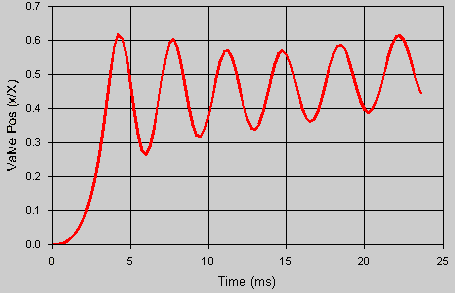Honking
Honking, which can sound roughly like an airhorn, is the result of a valve that vibrates open and closed; the cycle is like this:
- The diaphragm/piston unseats, and due to the increase in differential force caused by the "new" area, is pushed back rather quickly.
- Air pressure in the pilot volume starts to build, as the diaphragm/piston moves, compressing it.
- The momentum of the diaphragm/piston keeps it going past the point where the pressures on both sides of the diaphragm/piston are equal.
- The higher pressure in the pilot volume now accelerates the diaphragm/piston back to where it started... and you can follow the steps from #2, but with the pressure in the pilot volume dropping.
If a valve is honking, it might not be opening fully. This will decrease performance. Honking is often interpreted as a sign that you are using a pilot valve that is too small, and this occurs most often in un-modified sprinkler valves due to the extremely small stock pilot. This pilot also vents to the barrel instead of the atmosphere, which increases feedback.
(Note the upwards trend in the valve position.)
It is also possible that honking is irrelevant to the operation of the valve. When the projectile leaves the barrel there is a very sudden drop in pressure in front of the diaphragm/piston. If the pressure drops below the pilot volume pressure then the valve will close. As the pressure in the pilot volume continues to drop the valve will re-open. In some situations, this process will repeat and the valve will honk. However, since this is happening after the projectile has left the barrel it has no affect on the performance of the gun.
